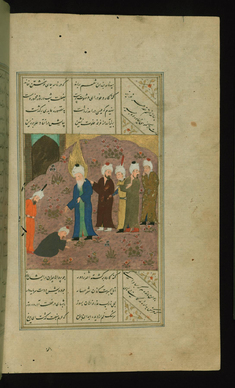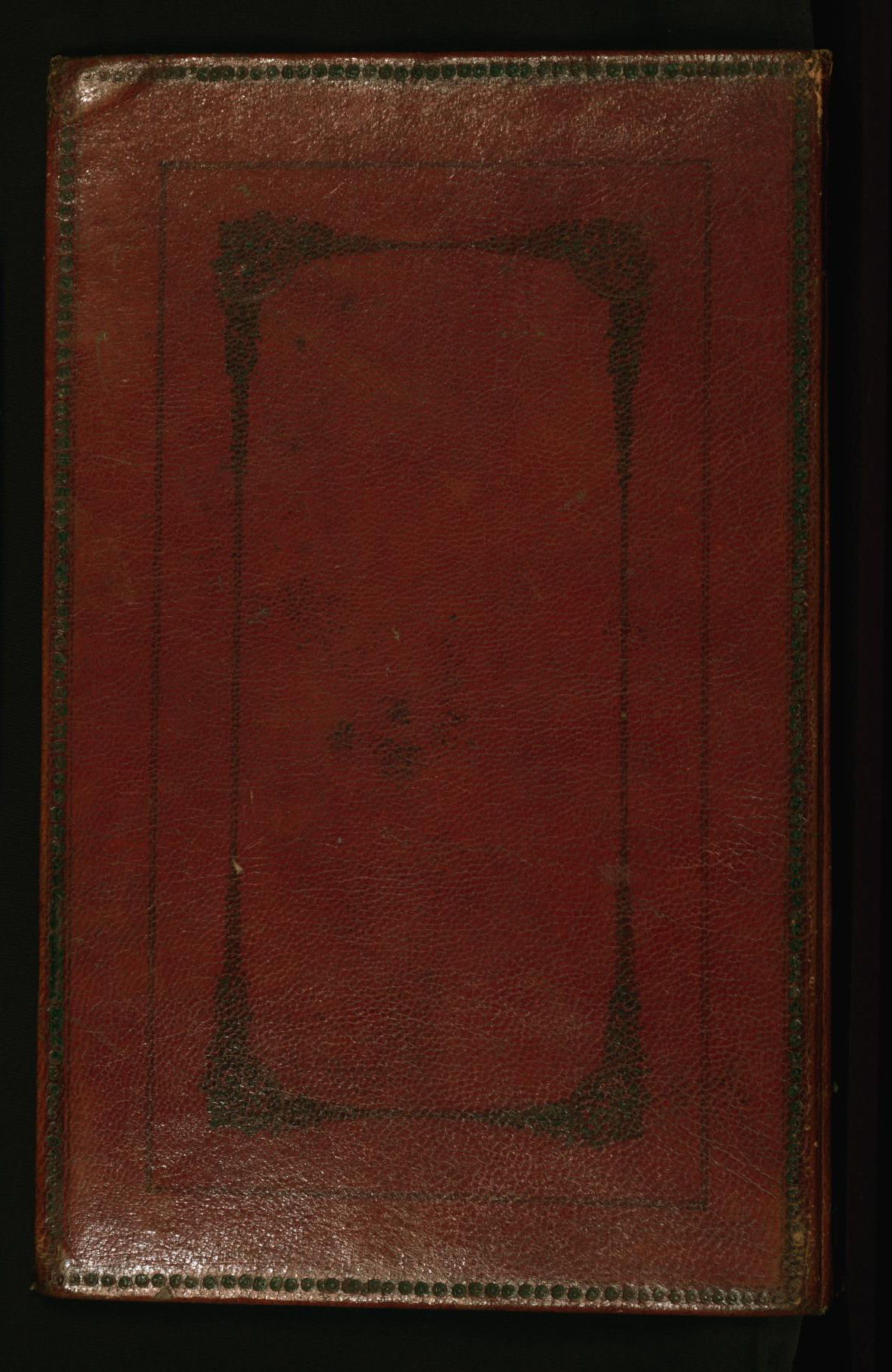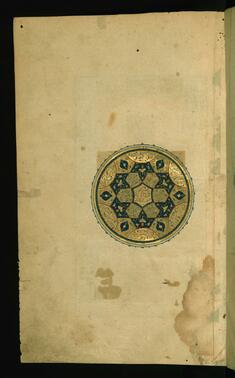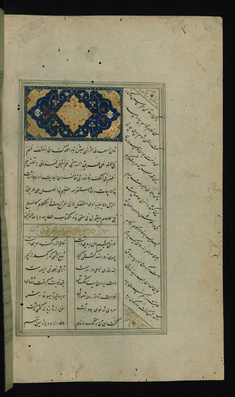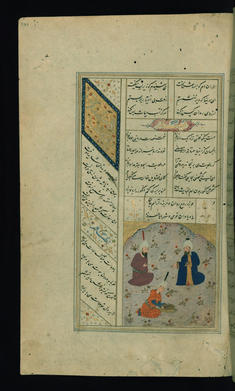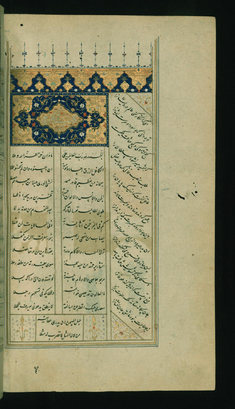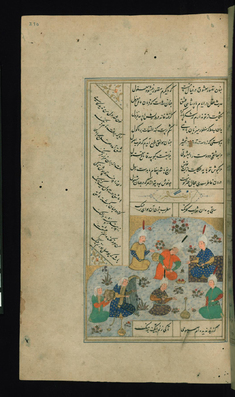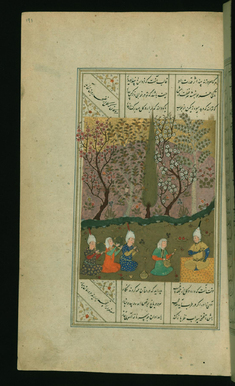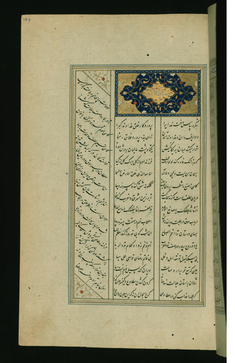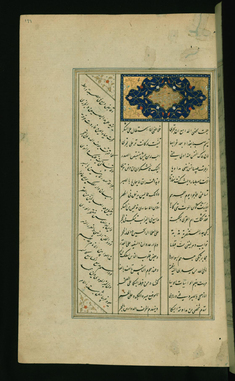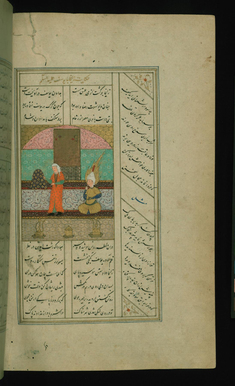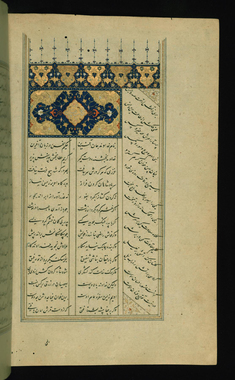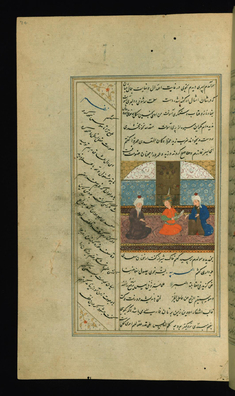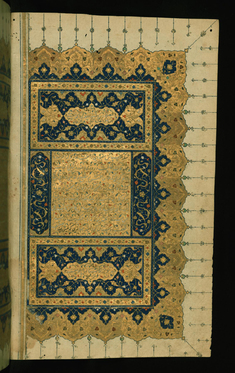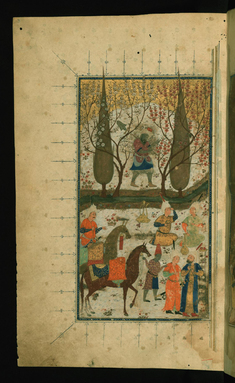Collected Works (Kulliyat)
(Manuscripts and Rare Books, Islamic World , Islamic Manuscripts)
Walters manuscript W.617, an illuminated and illustrated Safavid copy of the collected works (Kulliyat-i Sa'di) of Sa`di (died 691 AH/AD 1292) contains, among other works, the Gulistan and the Bustan. It was written in black Nasta'liq script and, according to the Arabic colophon, was completed in Shiraz (Iran) on the 1st Rabi' I 934 AH/AD 1527. The poet's name, given as Muslih-i Din Shaykh Sa'di, is inscribed in the illuminated headpiece on fol. 3b. The codex opens with two illuminated medallions inscribed with the book's contents (fols. 1b-2a), followed by a double-page illustrated frontispiece (fols. 2b-3a). The text begins with a double-page illuminated frontispiece (fols. 3b-4a). There are 10 illustrations in total. The binding is not original to the manuscript.
Provenance
Provenance (from the French provenir, 'to come from/forth') is the chronology of the ownership, custody, or location of a historical object. Learn more about provenance at the Walters.
Henry Walters, Baltimore [date and mode of acquisition unknown]; Walters Art Museum, 1931, by bequest.
Geographies
Iran, Shiraz (Place of Origin)
Measurements
Folio H: 9 13/16 x W: 6 1/8 in. (25 x 15.5 cm)
Credit Line
Acquired by Henry Walters
Location in Museum
Not on view
Accession Number
In libraries, galleries, museums, and archives, an accession number is a unique identifier assigned to each object in the collection.
In libraries, galleries, museums, and archives, an accession number is a unique identifier assigned to each object in the collection.
W.617
Do you have additional information?
Related Objects
